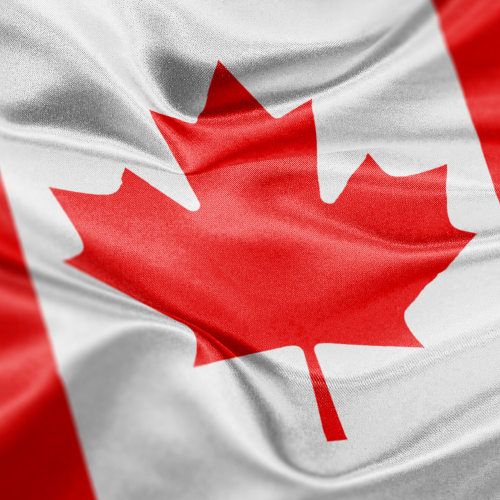Economic Update: Unprecedented $713 Billion to be Borrowed in 2020-21

Evelyn Jacks & Beth Graddon
According to the July 8 Economic Snapshot, the Canadian economy is projected to shrink by 6.8%, the worst economic contraction since the Great Depression. Worse, Canadians face an unprecedented total market debt level of $1.236 Trillion dollars projected for the end of 2020-21 and the government plans to finance $713 billion of that, which means that each of Canada’s 37,742,154 people, now face a liability of $32,748.66. It’s no wonder the PBO issued a report on a “wealth tax” the same day.
That $713 billion shortfall will require a historic level of bond issuance in the 10-year and 30-year bonds and a significant reliance on borrowing through the issuance of treasury bills, which will have weekly maturities for 3-, 6- and 12-month bonds until the end of this year.
The 2020-21 deficit is expected to be even higher than recent projections by the Parliamentary Budget Officer ($256 billion) and CD Howe ($275.6 billion). It comes in at $343.2 billion which is ten times higher than projections in the December Economic and Fiscal Update 2019. The pandemic response benefits have contributed to $212 billion, while the economic slowdown contributing to an additional $81.3 billion.
This brings the current Debt-to-GDP ratio up to 49.1% for 2020-2021, up significantly from 31% in 2019-2020. The projected numbers from the Snapshot appear in billions below for 2020 and where indication, 2021.
|
REVENUE
|
EXPENSES
|
DEBT CHARGES
|
TOTAL EXPENSES
|
DEFICIT
|
FEDERAL DEBT
|
%/ GDP
|
REAL GDP GROWTH 20/21
|
3 MO. T-BILL RATES 20/21
|
10 YR GOVT. BOND RATES
20/21
|
|
$268.8
|
$592.6
|
$19.5
|
$612.1
|
$343.2
|
$1,060.0
|
49.1
|
-6.8/5.5
|
0.5/0.3%
|
0.8/1.0
|
A bright spot on the horizon: lower interest rates will save over $4 billion in public debt charges, compared to what was forecasted in the 2019 Economic and Fiscal Update from December 2019.
You will note on the following chart the significant change in the numbers since the December 2019 Economic and Fiscal Update. In particular, note the significant reduction in T-Bill rates, which will match GDP inflation of 0.5% in 2020 and 10 Year government bond rates, which will barely surpass it at 0.8%.
Table 2.3
Average Private Sector Economic Forecasts
per cent, unless otherwise indicated
| |
2020Q1
|
2020Q2
|
2020Q3
|
2020Q4
|
2020
|
2021
|
|
Real GDP Growth1
|
|
|
|
|
|
|
|
Economic and Fiscal Update 2019
|
1.6
|
1.6
|
1.7
|
1.6
|
1.6
|
1.8
|
|
2020 Economic and Fiscal Snapshot
|
-8.2
|
-40.6
|
32.2
|
13.8
|
-6.8
|
5.5
|
|
GDP Inflation1
|
|
|
|
|
|
|
|
Economic and Fiscal Update 2019
|
2.1
|
2.1
|
2.1
|
1.9
|
2.0
|
2.0
|
|
2020 Economic and Fiscal Snapshot
|
1.8
|
-8.3
|
3.7
|
4.3
|
0.5
|
2.2
|
|
Nominal GDP Growth1
|
|
|
|
|
|
|
|
Economic and Fiscal Update 2019
|
3.7
|
3.8
|
3.9
|
3.6
|
3.7
|
3.8
|
|
2020 Economic and Fiscal Snapshot
|
-6.5
|
-45.5
|
37.1
|
18.6
|
-6.3
|
7.9
|
|
Nominal GDP Level ($ billions)1
|
|
|
|
|
|
|
|
Economic and Fiscal Update 2019
|
|
|
|
|
2,390
|
2,481
|
|
2020 Economic and Fiscal Snapshot
|
|
|
|
|
2,158
|
2,328
|
|
Difference with Economic
and Fiscal Update 2019
|
|
|
|
|
|
|
|
2020 Economic and Fiscal Snapshot
|
|
|
|
|
-231
|
-153
|
|
3-month Treasury Bill Rate
|
|
|
|
|
|
|
|
Economic and Fiscal Update 2019
|
1.5
|
1.5
|
1.5
|
1.5
|
1.5
|
1.6
|
|
2020 Economic and Fiscal Snapshot
|
1.2
|
0.3
|
0.3
|
0.2
|
0.5
|
0.3
|
|
10-Year Government Bond Rate
|
|
|
|
|
|
|
|
Economic and Fiscal Update 2019
|
1.4
|
1.6
|
1.7
|
1.8
|
1.6
|
2.0
|
|
2020 Economic and Fiscal Snapshot
|
1.1
|
0.6
|
0.7
|
0.7
|
0.8
|
1.0
|
|
1 Figures have been restated to reflect the historical revisions in the Canadian System of National Accounts. Sources: Statistics Canada; For Economic and Fiscal Update 2019, Department of Finance Canada September 2019 survey of private sector economists; for 2020 Economic and Fiscal Snapshot, Department of Finance Canada May 2020 survey of private sector economists.
|
Note that real and nominal GDP Growth is expected to rebound in 2021 from the significant contraction in 2020; however 3 month treasury bill rates will decline to 0.3% at the same time GDP inflation is expected to rise to 2.2%. 10 Year Government bond rates will lose ground too at a projected interest rate of 1.0%. Investors, in other words are not making a real return after inflation and taxes; they in fact will lose real dollar value, while borrowers will be tempted to lock in these very low interest rates as long as possible.
Canada’s Debt Management Strategy
The government has stated that the low cost of borrowing has occurred due to the current economic climate which has allowed for long-term bonds to be issued by the government at historically low-interest rates. The promise is that this will ensure Canada’s increased debt remains affordable and is less vulnerable to interest rate increased.
Table A3.1
Planned/Actual Sources and Uses of Borrowings for Fiscal Year 2020-21
billions of dollars
|
Sources of borrowings
|
|
|
Payable in Canadian currency
|
|
|
Treasury bills1
|
294
|
|
Bonds
|
409
|
|
Total payable in Canadian currency
|
703
|
|
Payable in foreign currencies
|
10
|
|
Total sources of borrowings
|
713
|
|
Uses of borrowings
|
|
|
Refinancing needs
|
|
|
Payable in Canadian currency
|
|
|
Treasury bills
|
152
|
|
Bonds
|
92
|
|
Of which:
|
|
|
Bonds that mature
|
92
|
|
Switch bond buybacks
|
-
|
|
Cash management bond buybacks
|
-
|
|
Retail debt
|
0
|
|
Total payable in Canadian currency
|
244
|
|
Payable in foreign currencies
|
1
|
|
Total refinancing needs
|
245
|
|
Financial requirements
|
|
|
Budgetary balance
|
343
|
|
Non-budgetary transactions
|
|
|
Pension and other accounts
|
-15
|
|
Non-financial assets
|
5
|
|
Loans, investments and advances
|
139
|
|
Of which:
|
|
|
Loans to enterprise Crown corporations
|
48
|
|
Insured Mortgage Purchase Program
|
51
|
|
Other
|
41
|
|
Other transactions2
|
-4
|
|
Total non-budgetary transactions
|
126
|
|
Total financial requirements
|
469
|
|
Total Uses of borrowings
|
713
|
|
Change in other unmatured debt transactions3
|
0
|
|
Net increase or decrease (-) in cash
|
0
|
|
Sources: Department of Finance calculations
Notes: Numbers may not add due to rounding. In the uses of borrowings section, a negative sign denotes a financial source.
1 Treasury bills are rolled over, or refinanced, a number of times during the year. This results in a larger number of new issues per year than the stock of outstanding at the end of the fiscal year, which is presented in the table.
2 Other transactions primarily comprise the conversion of accrual transactions to cash inflows and outflows for taxes and other accounts receivable, provincial and territorial tax collection agreements, amounts payable to taxpayers and other liabilities, and foreign exchange accounts.
3 Includes cross-currency swap revaluation, unamortized discounts on debt issues, obligations related to capital leases and other unmatured debt, where this refers to in the table.
|
|
Table A3.2
Change in Composition of Market Debt
billions of dollars, end of fiscal year
|
|
|
2016-17
Actual
|
2017-18
Actual
|
2018-19
Actual
|
2019-20
Actual
|
2020-21
Projected
|
|
Domestic bonds1
|
536
|
576
|
569
|
597
|
915
|
|
Treasury bills
|
137
|
111
|
134
|
152
|
294
|
|
Foreign debt
|
18
|
16
|
16
|
16
|
26
|
|
Retail debt
|
5
|
3
|
1
|
1
|
1
|
|
Total market debt
|
695
|
705
|
721
|
765
|
1,236
|
|
Sources: Bank of Canada; Department of Finance calculations
Note: numbers may not add due to rounding.
1 Includes additional debt that accrues during the fiscal year as a result of the inflation adjustments to Real Return Bonds.
|
At this time the government has not released any information on where they are expecting revenues from – including potential tax increases as part of this Economic Snapshot.
Additional educational resources: Join us live, online at The Meeting of the Minds July 9 at 11:30 EST. This free event is of special interest to advisors in the tax, accounting, bookkeeping, legal and financial services. Join a virtual, national conversation to discuss key issues of concern in overcoming financial obstacles using a Real Wealth Management™ Framework. Evelyn Jacks will also be providing a live overview of this federal Economic Snapshot.

COPYRIGHT OWNED BY KNOWLEDGE BUREAU INC., 2020.
UNAUTHORIZED REPRODUCTION, IN WHOLE OR IN PART, IS PROHIBITED.